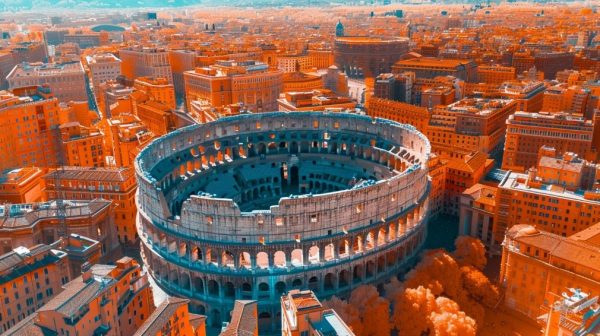A “COOL” MODERN ROMAN CONCRETE WITH RADIATIVE COOLING FUNCTIONALITY
In recent decades, the combined impact of human activity on our planet has led to global warming, the rise of the Urban Heat Island (UHI) effect, and a sharp increase in building energy costs for cooling.
An interdisciplinary research team led by Jorge S. Dolado (CFM) has developed a modern adaptation of Roman concrete with Daytime Radiative Cooling Capacity (DRCC). This innovative material, named COOLCRETE, demonstrates outstanding solar reflectance (>95%) and strong thermal emission within the atmospheric window (>91%)—comparable to the best state-of-the-art PDRC materials.
Field tests in the extreme desert climate of Tabernas (Almería) showed that COOLCRETE maintained surface temperatures between 2 °C and 10 °C below ambient levels during peak daylight hours. It also exhibited positive cooling powers of ~45 W/m² under solar irradiance of 850 W/m².
To complement these experimental results, the team developed predictive models that highlight COOLCRETE’s significant environmental benefits. At the building scale, using COOLCRETE on roofs reduced cooling energy demand and CO₂ emissions so effectively that air conditioning could become unnecessary in hot climates.
Beyond individual buildings, COOLCRETE offers a practical large-scale solution to mitigate the Urban Heat Island effect. Mesoscale climate simulations reveal that coating city rooftops with COOLCRETE can substantially lower urban temperatures. For example, during the severe Brussels heatwave of August 2019, citywide application of COOLCRETE could have reduced daytime temperatures by up to 10 °C and nighttime temperatures by 5 °C.

An artistic depiction of the Colosseum—a symbol of Roman engineering—reimagined within an overheated urban landscape. The image serves as a visual metaphor for ‘Coolcrete,’ a modern concrete inspired by Roman innovation, designed with daytime radiative cooling properties. By lowering surface temperatures and reducing cooling energy demand, Coolcrete presents a powerful opportunity for energy savings and offers a promising solution to mitigate the Urban Heat Island effect.



